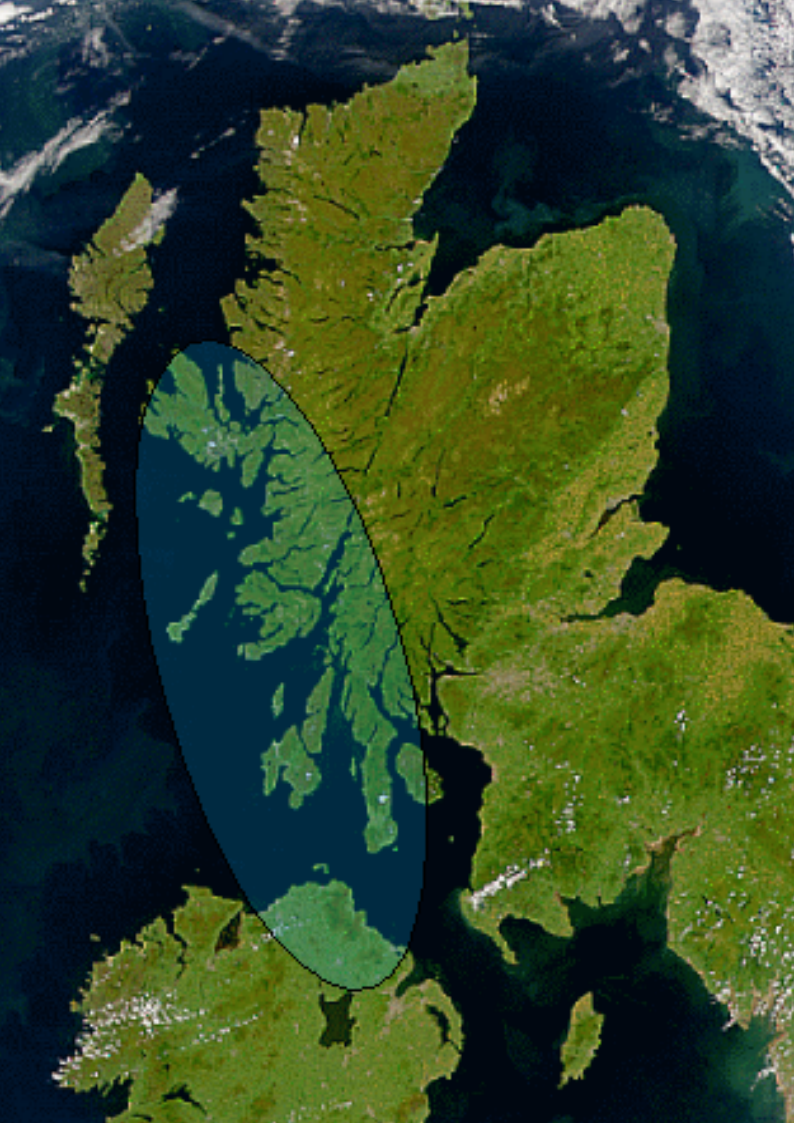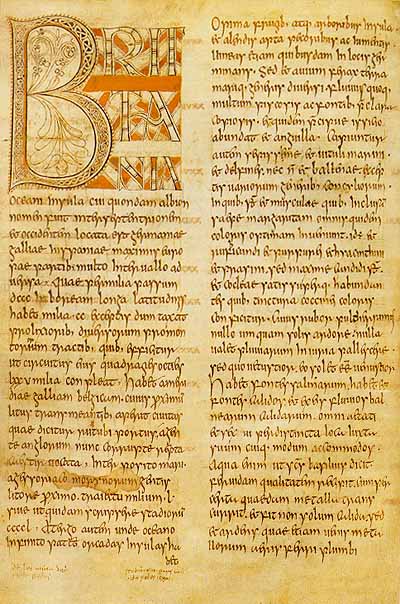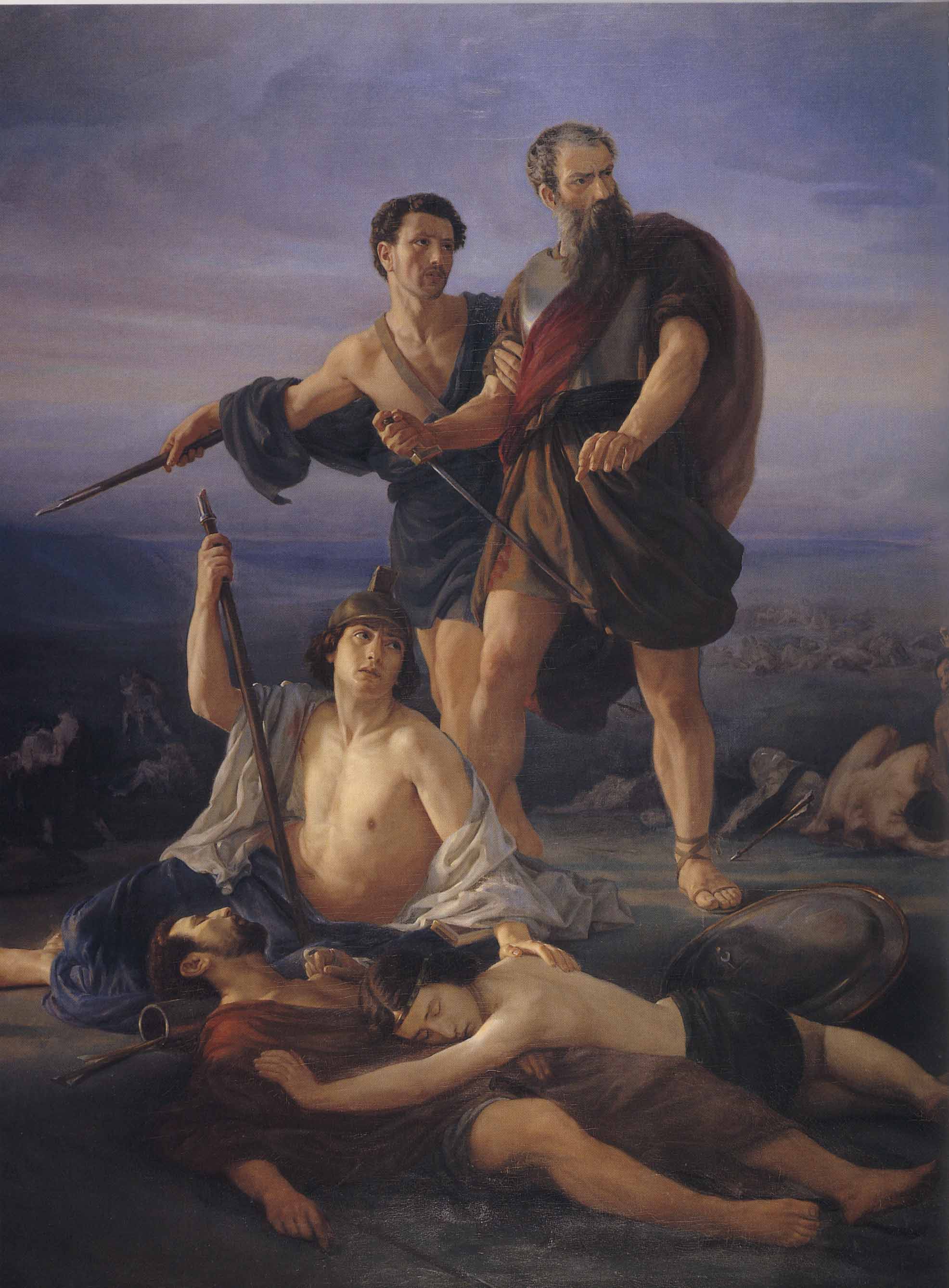|
Ăthelfrith Of Bernicia
Ăthelfrith (died c. 616) was King of Bernicia from c. 593 until his death. Around 604 he became the first Bernician king to also rule the neighboring land of Deira, giving him an important place in the development of the later kingdom of Northumbria. He was especially notable for his successes against the Britons and his victory over the Gaels of DĂĄl Riata. Although he was defeated and killed in battle and replaced by a dynastic rival, his line was eventually restored to power in the 630s. Background Ăthelfrith, son of Ăthelric and grandson of Ida, apparently succeeded Hussa as king of the Bernicians around the year 592 or 593; Ăthelfrith's accession may have involved dynastic rivalry and the exile of Hussa's relatives.Michelle Ziegler,The Politics of Exile in Early Northumbria", ''The Heroic Age'', Issue 2, Autumn/Winter 1999. The genealogies attached to some manuscripts of the ''Historia Brittonum'' say that Ăthelfrith ruled Bernicia for twelve years and ruled Deira ... [...More Info...] [...Related Items...] OR: [Wikipedia] [Google] [Baidu] |
Acha Of Deira
Acha of Deira was a princess of Deira, and the daughter of Ălla of Deira. She married Ăthelfrith, king of Bernicia. He may have married her prior to taking power in Deira, in which case the marriage may have facilitated it, or he may have done so afterwards in order to consolidate his position there. They had eight children: * Eanfrith of Bernicia (590â634 CE) * Oswald of Northumbria (c. 604 â 5 August 642 CE) * Oswiu of Northumbria Oswiu, also known as Oswy or Oswig ( ang, ĆswÄ«g; c. 612 â 15 February 670), was King of Bernicia from 642 and of Northumbria from 654 until his death. He is notable for his role at the Synod of Whitby in 664, which ultimately brought the chur ... (c. 612 â 15 February 670 CE) * Oswudu of Northumbria * Oslac of Northumbria * Oslaf of Northumbria * Offa of Northumbria * Ăbba of Northumbria References {{DEFAULTSORT:Acha of Deira 6th-century births 7th-century deaths English princesses 6th-century English people 7th-cent ... [...More Info...] [...Related Items...] OR: [Wikipedia] [Google] [Baidu] |
Historia Brittonum
''The History of the Britons'' ( la, Historia Brittonum) is a purported history of the indigenous British (Brittonic) people that was written around 828 and survives in numerous recensions that date from after the 11th century. The ''Historia Brittonum'' is commonly attributed to Nennius, as some recensions have a preface written in his name. Some experts have dismissed the Nennian preface as a late forgery, arguing that the work was actually an anonymous compilation. Overview The ''Historia Brittonum'' describes the supposed settlement of Britain by Trojan expatriates and states that Britain took its name after Brutus, a descendant of Aeneas. The work was the "single most important source used by Geoffrey of Monmouth in creating his ''Historia Regum Britanniae''" and via the enormous popularity of the latter work, this version of the earlier history of Britain, including the Trojan origin tradition, would be incorporated into subsequent chronicles for the long-running history ... [...More Info...] [...Related Items...] OR: [Wikipedia] [Google] [Baidu] |
Battle Of Degsastan
The Battle of Degsastan was fought around 603 between king Ăthelfrith of Bernicia and the Gaels under ĂedĂĄn mac GabrĂĄin, king of DĂĄl Riada. Ăthelfrith's smaller army won a decisive victory, although his brother Theodbald was killed. Very little further is known about the battle. The location of the nominal Degsastan is not known, either; Dawstane in Liddesdale, Scotland, is a possibility. According to Bede's account in his ''Historia ecclesiastica gentis Anglorum'' (Book I, chapter 34), Ăthelfrith had won many victories against the Britons and was expanding his power and territory, and this concerned ĂedĂĄn, who led "an immense and mighty army" against Ăthelfrith. Although Ăthelfrith had the smaller army, Bede reports that almost all of ĂedĂĄn's army was slain, and ĂedĂĄn himself fled. After this defeat, according to Bede, the Irish kings in Britain would not make war against the English again, right up to Bede's own time (130 years later). ĂedĂĄn's army included t ... [...More Info...] [...Related Items...] OR: [Wikipedia] [Google] [Baidu] |
ĂedĂĄn Mac GabrĂĄin
ĂedĂĄn mac GabrĂĄin (pronounced in Old Irish; ga, AodhĂĄn mac GabhrĂĄin, lang), also written as Aedan, was a king of DĂĄl Riata from 574 until c. 609 AD. The kingdom of DĂĄl Riata was situated in modern Argyll and Bute, Scotland, and parts of County Antrim, Ireland. Genealogies record that ĂedĂĄn was a son of GabrĂĄn mac Domangairt. He was a contemporary of Saint Columba, and much that is recorded of his life and career comes from hagiography such as AdomnĂĄn of Iona's ''Life of Saint Columba''. ĂedĂĄn appears as a character in Old Irish and Middle Irish language works of prose and verse, some now lost. The Irish annals record ĂedĂĄn's campaigns against his neighbours, in Ireland, and in northern Britain, including expeditions to the Orkney Islands, the Isle of Man, and the east coast of Scotland. As recorded by Bede, ĂedĂĄn was decisively defeated by Ăthelfrith of Bernicia at the Battle of Degsastan. ĂedĂĄn may have been deposed, or have abdicated, following this ... [...More Info...] [...Related Items...] OR: [Wikipedia] [Google] [Baidu] |
Whirlpool
A whirlpool is a body of rotating water produced by opposing currents or a current running into an obstacle. Small whirlpools form when a bath or a sink is draining. More powerful ones formed in seas or oceans may be called maelstroms ( ). ''Vortex'' is the proper term for a whirlpool that has a downdraft. In narrow ocean straits with fast flowing water, whirlpools are often caused by tides. Many stories tell of ships being sucked into a maelstrom, although only smaller craft are actually in danger. Smaller whirlpools appear at river rapids and can be observed downstream of artificial structures such as weirs and dams. Large cataracts, such as Niagara Falls, produce strong whirlpools. Notable whirlpools Saltstraumen Saltstraumen is a narrow strait located close to the Arctic Circle, south-east of the city of BodĂž, Norway. It has one of the strongest tidal currents in the world. Whirlpools up to in diameter and in depth are formed when the current is at its strongest. ... [...More Info...] [...Related Items...] OR: [Wikipedia] [Google] [Baidu] |
Y Gododdin
''Y Gododdin'' () is a medieval Welsh poem consisting of a series of elegies to the men of the Brittonic kingdom of Gododdin and its allies who, according to the conventional interpretation, died fighting the Angles of Deira and Bernicia at a place named '' Catraeth'' in about AD 600. It is traditionally ascribed to the bard Aneirin and survives only in one manuscript, the ''Book of Aneirin''. The ''Book of Aneirin'' manuscript is from the later 13th century, but ''Y Gododdin'' has been dated to between the 7th and the early 11th centuries. The text is partly written in Middle Welsh orthography and partly in Old Welsh. The early date would place its oral composition soon after the battle, presumably in the ''Hen Ogledd'' ("Old North"); as such it would have originated in the Cumbric dialect of Common Brittonic.Elliott (2005), p. 583. Others consider it the work of a poet from Wales in the 9th, 10th, or 11th century. Even a 9th-century date would make it one of the oldest survivi ... [...More Info...] [...Related Items...] OR: [Wikipedia] [Google] [Baidu] |
Catterick, North Yorkshire
Catterick () is a village, civil parish and electoral ward in the Richmondshire district of North Yorkshire, England. Historically part of the North Riding of Yorkshire, it is north-west of the county town of Northallerton just to the west of the River Swale. It lends its name to nearby Catterick Garrison and the nearby hamlet of Catterick Bridge, the home of Catterick Racecourse where the village Sunday market is held. It lies on the route of the old Roman road of Dere Street and is the site of the Roman fortification of Cataractonium. Toponymy The etymology of the name is derived from the Latin place name "Cataractonium", which looks like a Latin/Greek mixture meaning "place of a waterfall", but it might have been a Roman misunderstanding of the Celtic name ''Catu-rÄtis'' meaning "battle ramparts", as partly supported by the spelling ÎαÏÎżÏ ÏαÎșÏÎżÎœÎčÎżÎœ (Catouractonion) on the Ptolemy world map. History The place is mentioned in Ptolemy's Geographia of as a l ... [...More Info...] [...Related Items...] OR: [Wikipedia] [Google] [Baidu] |
Battle Of Catraeth
The Battle of Catraeth was fought around AD 600 between a force raised by the Gododdin, a Brythonic people of the ''Hen Ogledd'' or "Old North" of Britain, and the Angles of Bernicia and Deira. It was evidently an assault by the Gododdin party on the Angle stronghold of Catraeth, perhaps Catterick, North Yorkshire. The Gododdin force was said to have consisted of warriors from all over the Hen Ogledd, and even some from as far afield as Gwynedd in North Wales and Pictland. The battle was disastrous for the Britons, who were nearly all killed. The slain warriors were commemorated in the important early poem ''Y Gododdin'', attributed to Aneirin. Battle In his ''Canu Aneirin'' Ifor Williams interpreted ''mynydawc mwynvawr'' in the text of ''Y Gododdin'' to refer to a person, Mynyddog Mwynfawr in modern Welsh. Mynyddog, in Williams' reading, was the king of the Gododdin, with his chief seat at Din Eidyn (modern Edinburgh). Around the year 600 Mynyddog gathered about 300 selected w ... [...More Info...] [...Related Items...] OR: [Wikipedia] [Google] [Baidu] |
Historia Ecclesiastica Gentis Anglorum
The ''Ecclesiastical History of the English People'' ( la, Historia ecclesiastica gentis Anglorum), written by Bede in about AD 731, is a history of the Christian Churches in England, and of England generally; its main focus is on the conflict between the pre-Schism Roman Rite and Celtic Christianity. It was composed in Latin, and is believed to have been completed in 731 when Bede was approximately 59 years old. It is considered one of the most important original references on Anglo-Saxon history, and has played a key role in the development of an English national identity. Overview The ''Historia ecclesiastica gentis Anglorum'', or ''An Ecclesiastical History of the English People'' is Bede's best-known work, completed in about 731. The first of the five books begins with some geographical background and then sketches the history of England, beginning with Julius Caesar's invasion in 55 BC. A brief account of Christianity in Roman Britain, including the martyrdom of St Alb ... [...More Info...] [...Related Items...] OR: [Wikipedia] [Google] [Baidu] |
Israelites
The Israelites (; , , ) were a group of Semitic-speaking tribes in the ancient Near East who, during the Iron Age, inhabited a part of Canaan. The earliest recorded evidence of a people by the name of Israel appears in the Merneptah Stele of ancient Egypt, dated to about 1200 BCE. According to the modern archaeological account, the Israelites and their culture branched out of the Canaanite peoples and their cultures through the development of a distinct monolatristicâand later monotheisticâreligion centred on the national god Yahweh.Mark Smith in "The Early History of God: Yahweh and Other Deities of Ancient Israel" states "Despite the long regnant model that the Canaanites and Israelites were people of fundamentally different culture, archaeological data now casts doubt on this view. The material culture of the region exhibits numerous common points between Israelites and Canaanites in the Iron I period (c. 1200â1000 BCE). The record would suggest that the Isra ... [...More Info...] [...Related Items...] OR: [Wikipedia] [Google] [Baidu] |
Saul
Saul (; he, , ; , ; ) was, according to the Hebrew Bible, the first monarch of the United Kingdom of Israel. His reign, traditionally placed in the late 11th century BCE, supposedly marked the transition of Israel and Judah from a scattered tribal society to organized statehood. The historicity of Saul and the United Kingdom of Israel is not universally accepted, as what is known of both comes from the Hebrew Bible. According to the text, he was anointed as king of the Israelites by Samuel, and reigned from Gibeah. Saul is said to have died by suicide when he "fell on his sword" during a battle with the Philistines at Mount Gilboa, in which three of his sons were also killed. The succession to his throne was contested between Ish-bosheth, his only surviving son, and David, his son-in-law; David ultimately prevailed and assumed kingship over Israel and Judah. Biblical account The biblical accounts of Saul's life are found in the Books of Samuel: House of King Saul According t ... [...More Info...] [...Related Items...] OR: [Wikipedia] [Google] [Baidu] |
Paganism
Paganism (from classical Latin ''pÄgÄnus'' "rural", "rustic", later "civilian") is a term first used in the fourth century by early Christianity, early Christians for people in the Roman Empire who practiced polytheism, or ethnic religions other than Judaism. In the time of the Roman empire, individuals fell into the pagan class either because they were increasingly rural and provincial relative to the Christian population, or because they were not ''Miles Christianus, milites Christi'' (soldiers of Christ).J. J. O'Donnell (1977)''Paganus'': Evolution and Use ''Classical Folia'', 31: 163â69. Alternative terms used in Christian texts were ''Greeks, hellene'', ''gentile'', and ''wikt:heathen, heathen''. Ritual sacrifice was an integral part of ancient Classical mythology, Graeco-Roman religion and was regarded as an indication of whether a person was pagan or Christian. Paganism has broadly connoted the "Civil religion, religion of the peasantry". During and after the Middle A ... [...More Info...] [...Related Items...] OR: [Wikipedia] [Google] [Baidu] |
_Enwau_ac_Anrhyfeddodau_Ynys_Prydain.jpg)






_b_016.jpg)